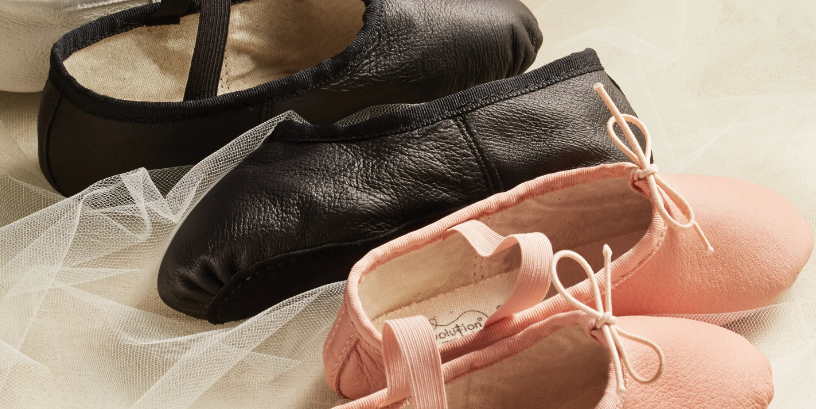If you’ve never ordered Jazz shoes before, it can be difficult to know which size to order.
When it comes to choosing the right jazz shoe for you we’ve provided a breakdown of the key features and benefits of our jazz shoes, making your decision one step easier, allowing you to keep dancing to the rhythm of your own beat!
This guide will provide you with all the information you need for the perfect pair of Jazz shoes.
Types of Jazz Shoe
There are a variety of Jazz shoes on the market today, all of which differ in material, sole, style and color.
1.Full Sole
Unlike the other jazz shoes in the collection, the Full Sole Jazz Shoe is the only shoe with a full sole to provide all-day support.
2.Split Sole
Similar to the full sole jazz shoe, the Split Sole Jazz Shoe is the other lace-up jazz shoe in the collection, allowing for a customised, adjustable fit with the inclusion of shoe laces.
3.Pull On Split Sole
The Pull On Split Sole Jazz Shoe is the ideal shoe for a narrow foot. Made from supple premium leather, it contains an elastic insert on top of the arch of the foot, providing extra support and security.
4.Slip On Split Sole
It has elastic inserts on the sides of the shoe, improving the flexibility and fit, and allowing it to fit a range of foot shapes.
5.Neoprene
Its lightweight, flexible construction makes it feel like you are barely wearing a shoe but with the shock absorbing and impact protection soles, appropriate support is still provided.
6.Mesh Split Sole
It has a mesh insert underneath the arch of supporting breathability, flexibility and the elimination of bulky creases, and with its slimline design and low profile fit it has a streamlined aesthetic.
Measure Shoe Size & Foot Width
1. Step down on a piece of paper and trace the outline of your foot. Particularly if you have trouble touching your toes, it will be easier if you have a friend present to trace your foot for you.
2. Use the ruler to measure the length of your foot from the longest toe (usually the big toe, but depends on the foot) to the back of your heel. Write down the measurement.
3. Measure the length of the foot across the widest part of the foot (usually across the ball of the foot). Write down the measurement.
4. Compare your foot measurements to the measurements on our shoe length chart to find the number that corresponds to your shoe length.
5. Compare your foot measurements to our shoe width chart to find the letter(s) that correspond to your foot width.
Sizing in Jazz Shoes
Girls should start 1.5 -2 sizes larger than their regular street shoe. Boys should start 2 - 2.5 sizes larger than their regular street shoe size.
The shoes should feel snug with your toes flat and near the end of the shoe.
The shoe will mold to your foot and leather styled shoes will stretch a half size with wear. To ensure that the shoes are supportive of your foot and ankle, a snug fit is recommended.
WHAT TO WEAR TO YOUR FIRST POINTE SHOE FITTING
Medical fraternities advise that a young student should not commence pointe work before the age of eleven or twelve as the cartilage and bones of the feet are still soft. The student would normally have been studying ballet for about three to four years prior to going ‘en pointe’. Serious damage could occur if pointe work is commenced at too early an age before the correct development of all the muscles, however it is the teacher who would advise on this.
Once your ballet teacher says you are ready to go onto pointe, you will need to make an appointment for a Pointe Shoe Fitting which will take between 30 – 40 mins Your teacher may also have a preference for toe protection to be worn inside your pointe shoes, and there will be variety of suitable products on hand during your fitting.
Wear comfortable clothing as you will be asked to plié and rise during your fitting. It is also important for your fitter to see your bare feet at the start of your fitting, so either wear convertible tights or use the ballet socks provided in store.
Can I wear jazz shoes in a ballet class?
If your teacher allows it, you could. But note that there might be some movements and position that would be hindered by the heel- like sur le coups de pied positions or batterie work. Your weight distribution would also be a little more towards the ball of your foot. Also the line of the foot would be less streamline with the presence of heel of the shoe.
